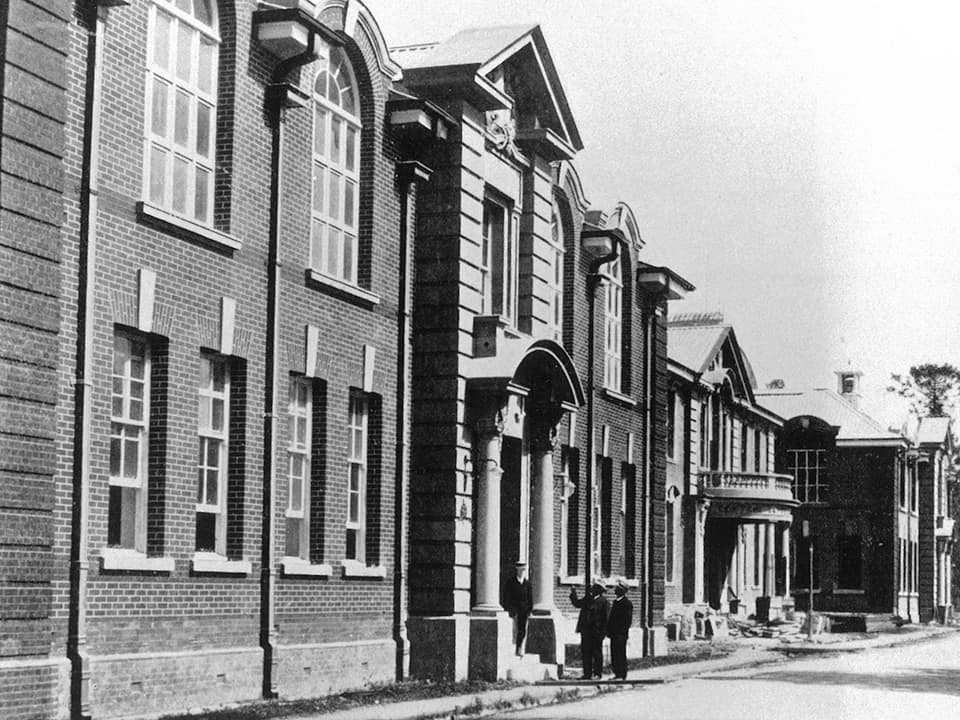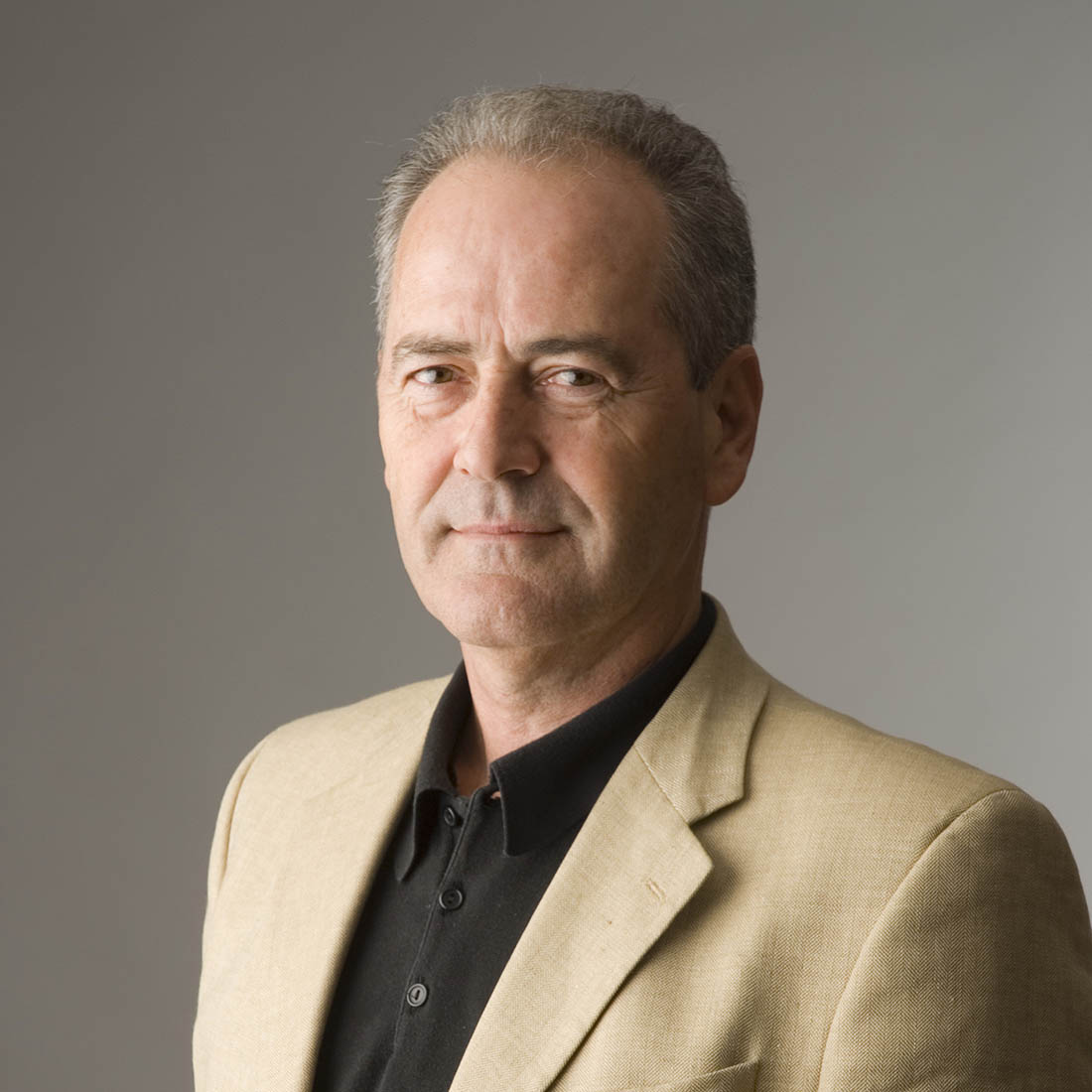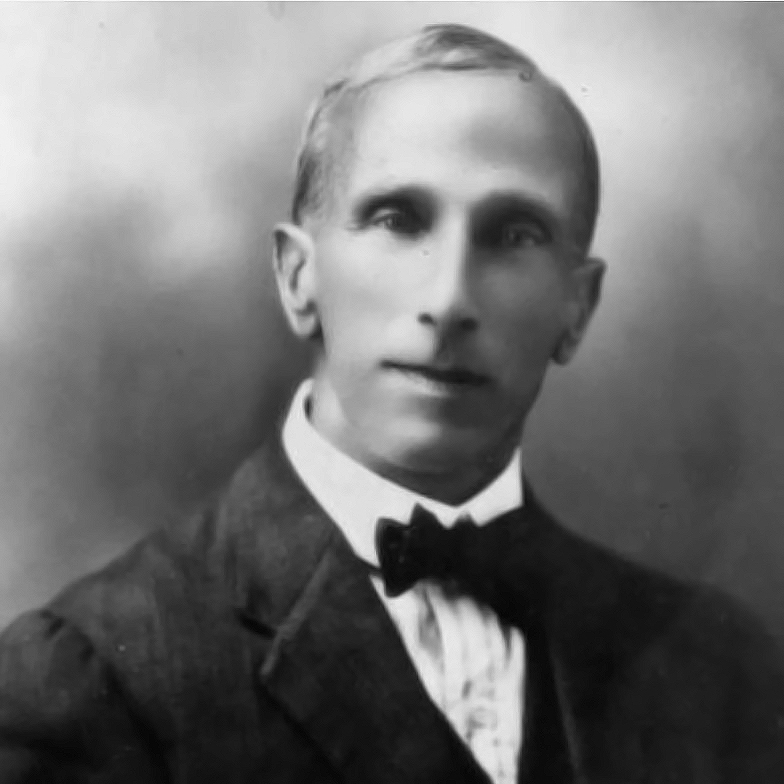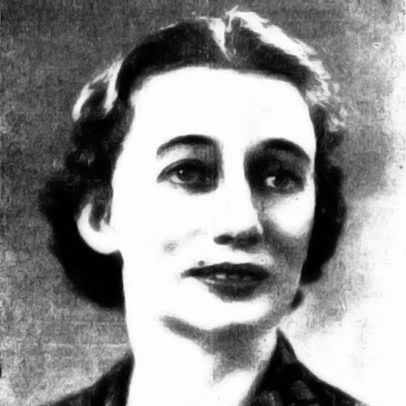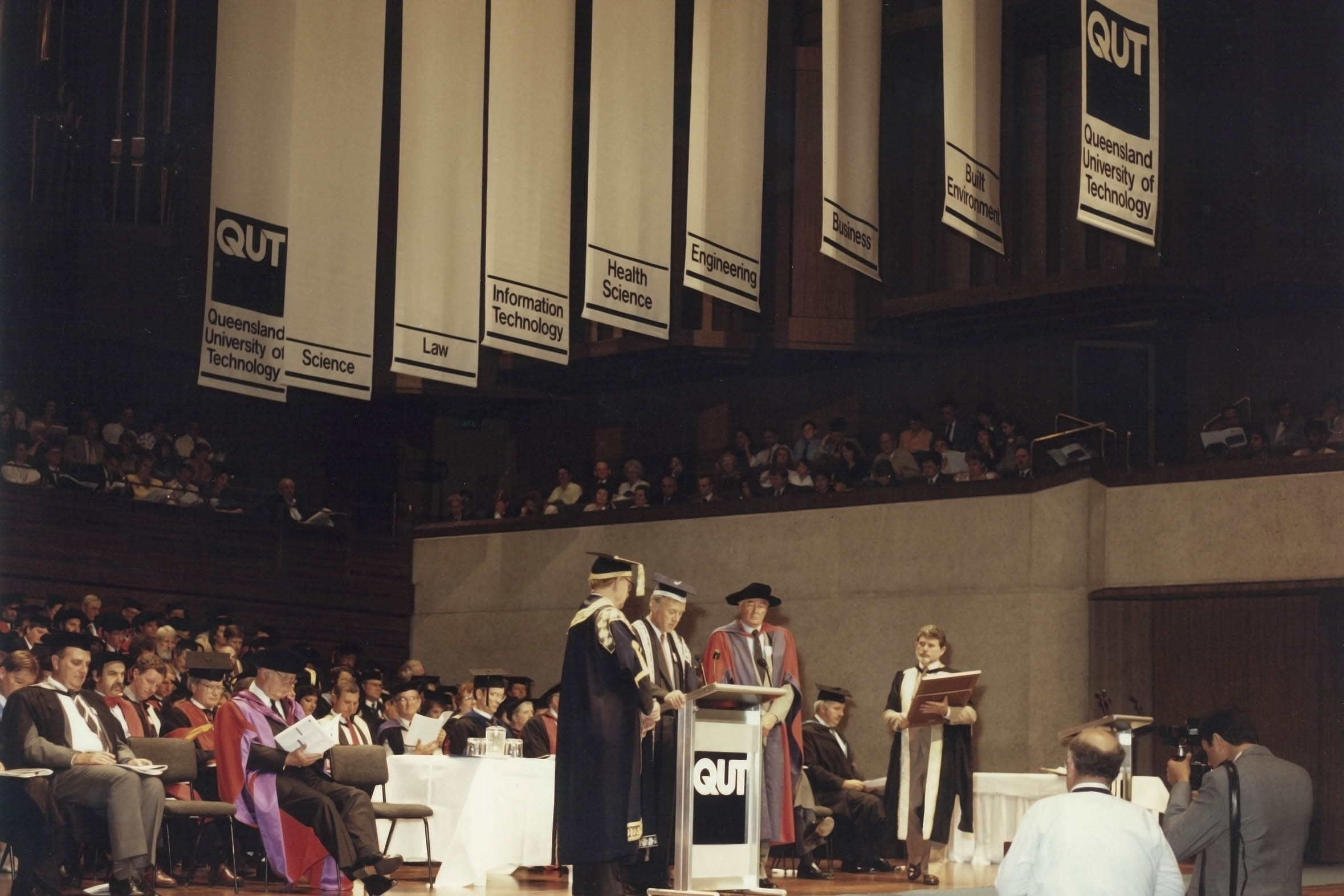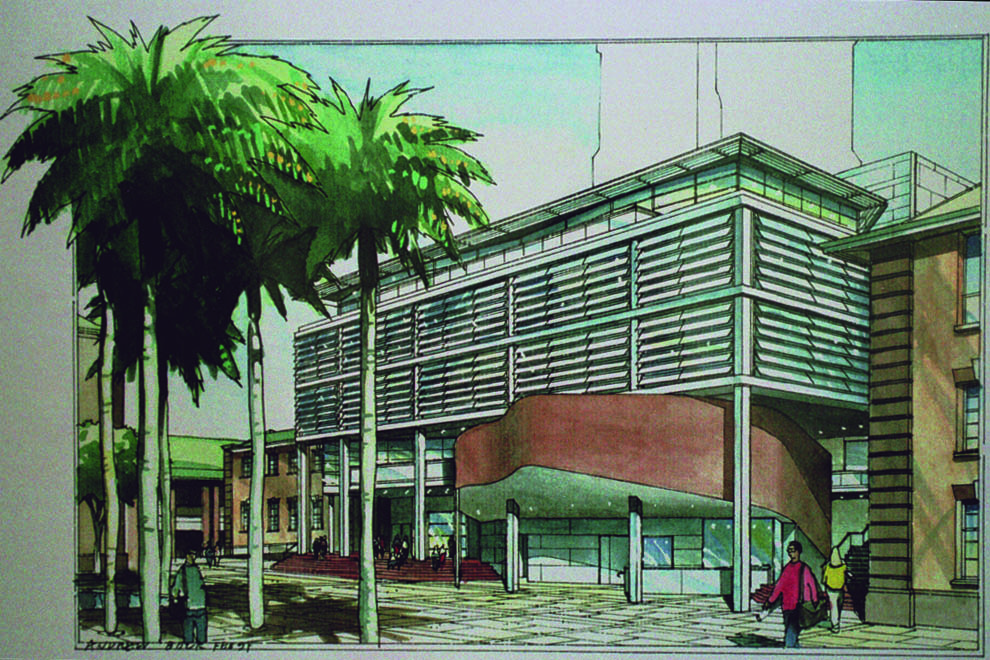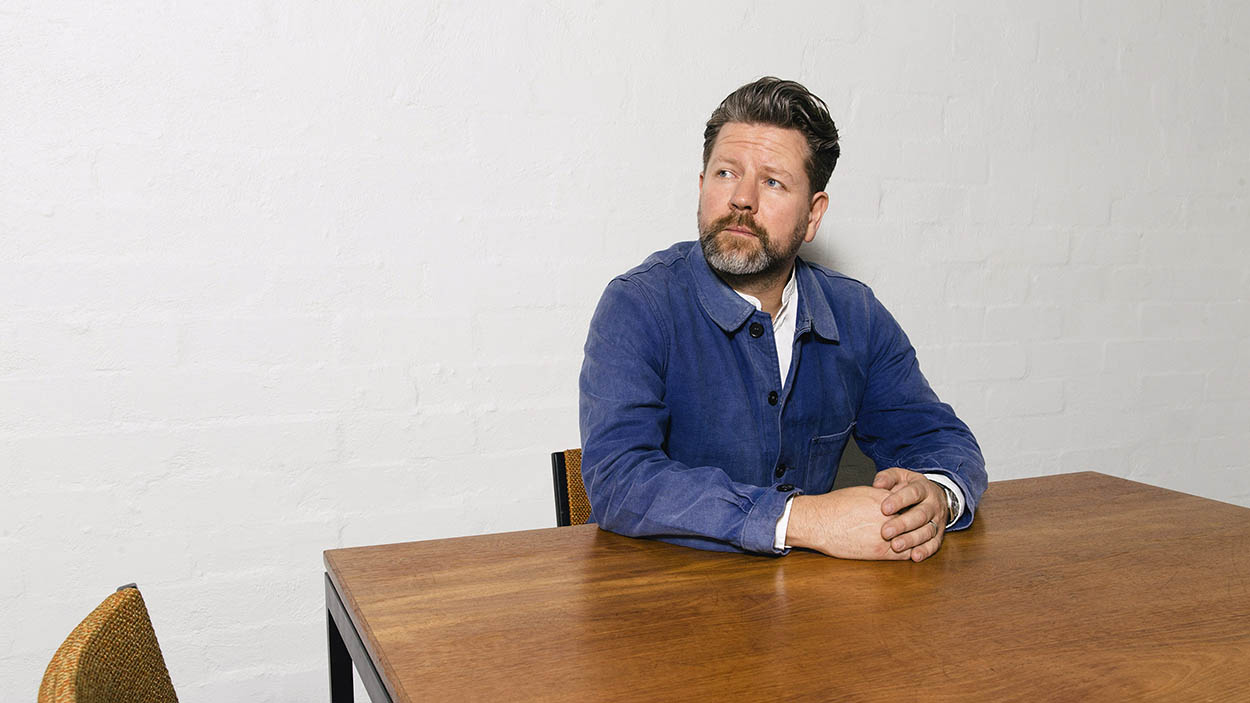Conrad Gargett
Arnold H. Conrad (CG 1912-1974) was an Instructor between 1912– 1917 at the CTC, with Thomas (Bren) Gargett (CG 1914-1975) one of its inaugural graduates in 1923. Currently, there are seven QUT alumni as practice directors and principals at Conrad Gargett, with Lawrence Toaldo the current Managing Director having graduated in 1996. Conrad Gargett was founded in 1890. In any terms, such a distinguished age denotes enduring skills, and confers a position of rare distinction. The origins of the practice presage a long history of determined professionalism, admirable business acumen and an extensive portfolio of Queensland’s major public, commercial and institutional buildings. Thomas Gargett was one of CTC’s inaugural graduates of the Diploma of Architecture course at the CTC in 1923, having received the AIA student prize in 1919. Currently, there are seven alumni of QUT as practice directors and principals at Conrad Gargett, with Lawrence Toaldo the current Managing Director having graduated in 1996 with a Bachelor of Architecture.
Phillips Smith Conwell
Phillips Smith Conwell has had a continuous presence in Australian architecture and design for 114+ years and is one of Brisbane’s longest serving practices. The firm has had a long association with QUT and its predecessors – the CTC and the QIT. Current and previous Directors of the practice completed their studies at all three faculties, and they are proud to have 90% of their architectural staff as QUT alumni. Their team regularly give back to the University through tutoring or guest critiquing at the School of Design, and since the late 1980’s, they have also worked on a number of architectural projects at their Gardens Point and Kelvin Grove campuses. Phillips Smith Conwell is honoured to be a part of the QUT Centenary of Architecture. It provides the opportunity to celebrate QUT’s contribution to the careers of thousands of architects and designers, and the education of the next generation.
bureau^proberts
bureau^proberts is an award-winning Brisbane-based architectural practice with 28 years of experience, recognised with 48 Australian Institute of Architects (AIA) awards. Specialists in cultural, development and housing projects, the firm’s footprint spans Cairns to China — and beyond. bureau^proberts deliver thoughtful design that responds to both community needs and commercial drivers and have been involved in the delivery of a number of projects for QUT, including the Chancellery, Bookshop, Guild Bar and La Boite Theatre. Four of the current practice directors are QUT alumni, with Liam Proberts (1988) and Terry McQuillan (2003) graduating with a Bachelor of Architecture, and Saskia Ruijs (2000) a Graduate Diploma in Interior Design and Christopher Chetham (1984) an Associate Diploma of Build Environment and a Post Graduate Diploma of Project Management.
Kerry and Lindsay Clare
Kerry and Lindsay Clare are QUT Alumni and recipients of the 2010 Royal Australian Institute of Architects (RAIA) Gold Medal, noted by the jury for their “enormous contribution to the advancement of architecture”, particularly with their belief of good design and sustainable design being intrinsically linked. Clare Design is consistently acknowledged for a rare combination of design excellence and high-level environmental performance, having received more than 50 RAIA awards for public, educational, commercial, housing, environmental and recycling projects. The work has been included in over 180 national and international books, periodicals and publications. Exhibitions of their work have been held in New York, Tokyo, Sydney, Melbourne, Perth, the 1991 and 2008 Venice Biennale, the 1996 Milan Triennale, the 1996 International Union of Architects (UIA) Congress Barcelona and the Place Makers - Contemporary Queensland Architects at Queensland Gallery of Modern Art in 2008. The Cotton Tree social housing project was selected as one of ten worldwide for inclusion in the ‘Ten Shades of Green’ exhibition in New York.
Noel Robinson
Noel Robinson is an Architect, Urbanist, Adjunct Professor and Outstanding Alumni at QUT having graduated in 1971 with a Diploma in Architecture and a Diploma in Urban and Regional Planning in 1981. Since establishing his private practice in 1972, Noel has been working extensively across numerous countries. Noel is a Life Member of the AIA and has been the recipient of over 50 architectural and industry awards, including the Sulman Award for Outstanding Architecture in 1990 and the Export Hero Award from the Export Council of Australia in 2013. He has also received many other prestigious awards such as the BHP Architect of the Decade in 1990 and the Centenary Medal (Australian Honours System) for Services to Architecture in 2002. Noel has just completed Brisbane’s tallest building “Brisbane Skytower” at 90 storeys! Noel currently chairs a number of influential, independent design panels in Brisbane and the Sunshine Coast and directs his focus towards mentoring and encouraging sustainable design outcomes for the future of the world-wide professions of architecture, planning and design.
Shane Thompson
Shane Thompson is an Outstanding Alumnus of QUT, a prominent Australian architect and Principal of Shane Thompson Architects, a studio he established in 2011 after 24 years as a Principal of BVN Architecture. Shane’s work, from beautiful houses to major urban developments, is well known for its sensitivity to place and interest in materials and tectonics. Shane has received more than 100 awards, with a monograph on his work published in 2003. He is a regular conference speaker and his work has been included in international publications and exhibitions. Shane is a former President of the AIA Queensland Chapter, a former AIA National Councillor, was a Creative Director of the 2012 National Architecture Conference, an Adjunct Professor at the University of Queensland and in 2017 was elevated to Life Fellow of the AIA. Shane has a passionate interest in the arts, with a significant collection of contemporary art, and enjoys collaborating with visual and performing designers. Shane is also an exhibiting artist. His drawings and paintings based on landscape experience are held in numerous private and public collections.
John Barrow
Looking back over 52 years when I first enrolled in an Architectural course at the grand old red brick buildings of the QIT, I had little idea of the impact my choice would make on the rest of my life. I really adapted well to the practical methodology of the curriculum and launched myself into an exciting career. By the end of the course, six years later, I had established a strong stepping-stone for my future, and I was determined to go out and find opportunities to design innovative buildings in the wide world. That path led to London, where I was fortunate enough to build an architectural practice with partners who are still lifetime friends. From stadiums to entertainment arenas, hotels to motor-racing, the projects were extraordinary in every respect, culminating in both summer and winter Olympics and Paralympics in London and Sochi. I believe those days spent in my formative years at QUT, created a desire for simplicity, pragmatism and commitment, all of which served me well throughout my 40-year career.
